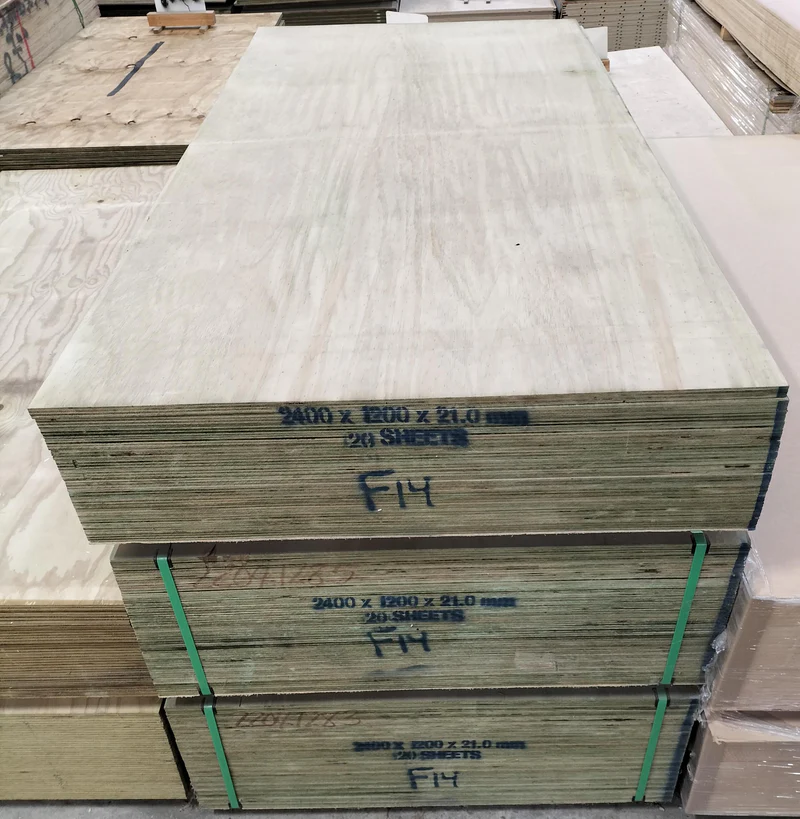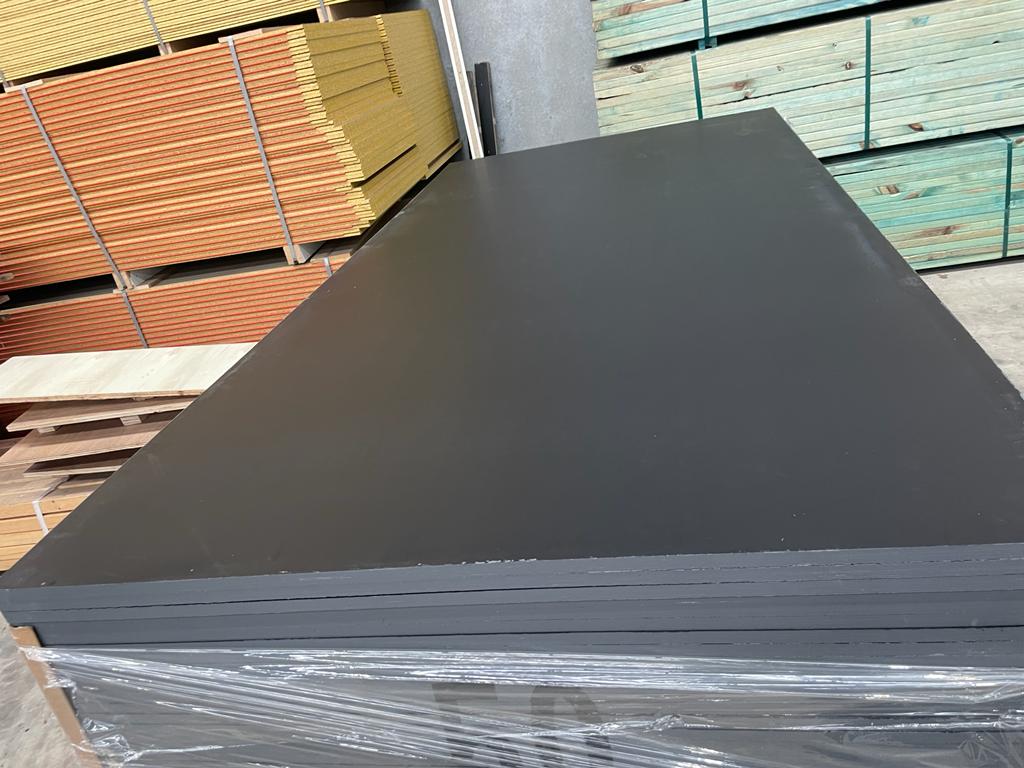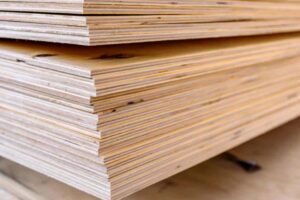Understanding the Differences Between F14 and F17 Plywood Grades
Plywood is a versatile building material that is commonly used in construction projects. It is made from thin layers of wood veneer that are glued together to create a strong and durable product. Plywood is available in different grades, and two popular options are F14 and F17 plywood. In this article, we will explore the key differences between these two grades and understand their respective uses in construction.
Defining Plywood: A Brief Overview
Plywood is a composite material that is manufactured by bonding together multiple layers of thin wood veneers. Each layer, known as a ply, is positioned perpendicular to the adjacent layers, which gives plywood its strength and rigidity. The manufacturing process of plywood involves several steps.
Interestingly, plywood has been used for centuries in various forms. Ancient Egyptians used early versions of plywood in the construction of furniture and sarcophagi. However, modern plywood as we know it today began to take shape in the 19th century with the advent of industrial manufacturing processes.
Understanding f17 grade plywood and f14 grade plywood is essential for choosing the right material for your project. Each grade offers different characteristics that can affect the final look and performance of the plywood. By familiarizing yourself with the grading system, you can make informed decisions when selecting plywood for your woodworking endeavors.
The Manufacturing Process of Plywood
First, the logs are stripped of bark and cut into thin sheets called veneers. These veneers are then dried to remove moisture and improve their strength. Next, the veneers are layered together with the grain direction alternating between each layer. This cross-grain construction method ensures that plywood resists warping and splitting. The layers are bonded together using adhesives and pressed under high pressure to create a solid panel.
It’s fascinating to note that the type of adhesive used in the manufacturing process can greatly impact the properties of the plywood. Different adhesives offer varying levels of water resistance, fire resistance, and overall durability. Manufacturers carefully select adhesives based on the intended application of the plywood, whether it be for indoor use, outdoor construction, or marine environments.

The Importance of Plywood in Construction
Plywood is widely used in construction due to its numerous advantages. It offers strength, stability, and durability, making it suitable for a variety of applications. Plywood is commonly used in residential and commercial buildings, furniture manufacturing, cabinetry, and more.
Moreover, plywood’s versatility extends beyond traditional construction uses. It is also utilized in the creation of musical instruments, aircraft, and even skateboards. The ability of plywood to be shaped and molded into various forms while maintaining its structural integrity makes it a valuable material in diverse industries.
The Classification of Plywood Grades
Plywood grades are a way to classify the quality and appearance of the material. The most common grading system used for plywood is the letter-and-number grading system, such as F14 and F17.
The Meaning of F Grades in Plywood
The F grading system is used to indicate the quality of the face and back veneers of the plywood. The letter “F” stands for “face,” and the number following it represents the quality of the face veneer. For example, F14 plywood has a higher quality face veneer compared to F17 plywood.
When it comes to F-grade plywood, the higher the number, the better the quality of the face veneer. This means that plywood with a higher F-grade will have fewer imperfections, such as knots and repairs, resulting in a smoother and more visually appealing surface. It is important to consider the intended use of the plywood when selecting the grade, as higher grade plywood is often used for projects where appearance is a key factor.
Factors Determining Plywood Grades
Several factors contribute to the grading of plywood, including the number of repairs, knots, stability, and overall appearance of the face and back veneers. Higher grade plywood will have fewer defects and a smoother surface.
In addition to the factors mentioned, the type of wood used in the plywood can also influence its grade. Different wood species have varying characteristics that can impact the overall quality of the plywood. For example, hardwood plywood is known for its durability and strength, making it a popular choice for projects that require a high-quality finish. Softwood plywood, on the other hand, is more affordable and is often used in construction applications where appearance is not a primary concern.
An In-depth Look at F14 Plywood
F14 plywood is known for its high quality and superior appearance. It is typically made from hardwood veneers, such as birch or oak, which gives it a beautiful and consistent grain pattern. The manufacturing process of F14 plywood involves carefully selecting and arranging the hardwood veneers to ensure a uniform and aesthetically pleasing look. Click here to learn more about oak.
Furthermore, F14 plywood undergoes a rigorous quality control process to meet industry standards. Each sheet is inspected for imperfections and defects, ensuring that only the highest quality plywood reaches the market. This attention to detail and quality assurance contribute to F14 plywood’s reputation as a premium building material.
Key Characteristics of F14 Plywood
One of the main characteristics of F14 plywood is its smooth and flawless surface. It has minimal knots, repairs, or other defects, which makes it ideal for projects that require a high-quality finish. F14 plywood also has excellent strength and durability, making it suitable for applications that require structural integrity. The precise construction of F14 plywood results in a stable and warp-resistant material, providing reliability and consistency in various woodworking projects.
Ideal Uses for F14 Plywood
F14 plywood is often used in applications where appearance is important, such as furniture, cabinetry, and decorative paneling. Its superior quality and consistent appearance make it a popular choice among craftsmen and designers. In addition to its aesthetic appeal, F14 plywood’s strength and durability make it suitable for structural applications like subflooring and roofing. Its versatility and reliability have established F14 plywood as a go-to material for both professional builders and DIY enthusiasts alike.

An In-depth Look at F17 Plywood
F17 plywood is a slightly lower grade compared to F14 plywood, but it still offers good quality and performance. It is commonly made from softwood veneers, such as pine or spruce. The grading of plywood is determined based on factors like the number of defects present in the wood veneers and the overall structural integrity of the plywood sheets.
Manufacturers use a grading system to classify plywood based on its intended use and quality. F17 plywood falls within the mid-range category, offering a balance between affordability and performance. It is designed to meet the needs of various construction projects that require a sturdy and reliable material.
Key Characteristics of F17 Plywood
F17 plywood may have slightly more visible defects compared to F14 plywood. However, it still provides sufficient strength and stability for many construction applications. It is known for its economical price and availability, making it a cost-effective option. The presence of defects in F17 plywood does not compromise its structural integrity but adds character to the material, making it suitable for projects where aesthetics are not a top priority.
Despite its lower grade, F17 plywood undergoes rigorous quality control measures to ensure that it meets industry standards for strength and durability. This type of plywood is versatile and can be used in various structural applications, providing reliable performance under different stress conditions.
Ideal Uses for F17 Plywood
F17 plywood is often used in construction projects where appearance is less important, such as roof sheathing, subflooring, and structural bracing. It is a reliable and practical choice for applications that require strength and durability. The affordability of F17 plywood makes it a popular option for projects that have budget constraints but still demand high-quality materials.
Due to its structural stability, F17 plywood is also suitable for temporary structures and formwork in concrete construction. Its consistent thickness and strength make it a preferred choice for builders and contractors looking for a cost-effective solution without compromising on performance. Learn more about cost-effective at https://www.research.fsu.edu/media/5380/cost-effectiveness-analysis.pdf
Comparing F14 and F17 Plywood Grades
When comparing F14 and F17 plywood grades, several factors come into play. It’s not just about the numbers; the quality and characteristics of the plywood can significantly impact the success of your project.
Strength and Durability Comparison
F14 plywood offers superior strength and durability compared to F17 plywood. Its higher quality veneers and construction provide better resistance to warping and splitting. F14 plywood is better suited for applications that require structural integrity. Whether you’re building furniture, cabinets, or structural elements, F14 plywood can provide the reliability and stability you need for long-lasting results.
Cost Differences Between F14 and F17
In terms of cost, F17 plywood is generally more affordable compared to F14 plywood. This makes F17 plywood a preferred choice for projects with budget constraints or applications where appearance is not the primary concern. While F17 plywood may offer cost savings, it’s essential to consider the trade-off in terms of strength and durability, especially for projects that require robust construction.
Understanding the differences between F14 and F17 plywood grades is essential to make informed decisions when selecting plywood for construction projects. Consider the specific requirements of your project, including the desired appearance, strength, and budget, to choose the most suitable grade for your needs. By weighing these factors carefully, you can ensure that your choice of plywood aligns with the demands of your project, leading to successful outcomes and lasting satisfaction.
Other resources: Tips for Choosing the Best Formply for Your Construction Project

